How to properly care for an apricot in autumn, the main measures for preparing it for winter
The apricot bore fruit, the harvest was harvested, the leaves began to turn yellow. September is coming ...
How do you need to properly care for an apricot in the fall in order to prepare the tree for winter, so that it overwinters successfully and next season again please you with even more of its delicious fruits? Let's figure it out.
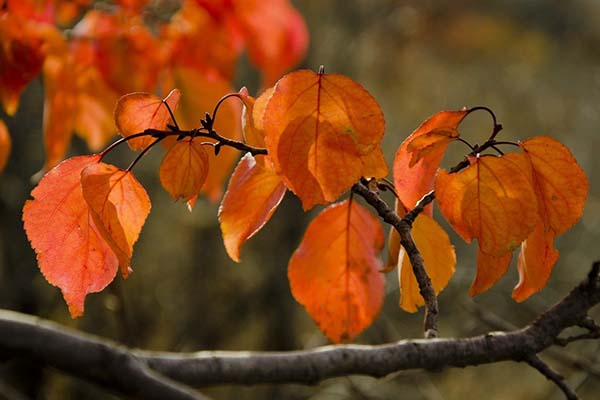
Content
- 1 How to care for an apricot in the fall in order to properly prepare for winter: the main autumn activities
- 2 Autumn feeding of apricot after fruiting
- 3 Autumn pruning of apricot
- 4 Autumn processing of apricots from diseases and pests: eradication spraying
- 5 Whitewashing apricots in autumn
- 6 Autumn water-charging irrigation
- 7 Shelter for apricots for the winter: protecting young trees from rodents, sunburn
How to care for an apricot in the fall to properly prepare for winter: the main autumn activities
So, here's what to do after harvesting the apricots to get the tree ready for winter:
- perform autumn feeding;
Important! Basically, all fruit trees are fertilized in the same way in autumn, so, for example, you can read with this material about feeding apple trees in autumn.
- trim;
Note! Usually, cut apricots yet in the springwhich you can read in detail aboutin this article.
- to clear the trunks from old dead bark, various mosses and lichens (of necessity);
- clean the trunk circle from plant and other debris;
Important! If the tree does not hurt, then garbage (except for fallen fruits) can be thrown onto the compost heap. But if it hurt, then you need to either burn it, or bury it very deeply, or just take it out of the site.
- conduct eradication treatment;
- whiten (required after processing).
Advice! Everything about whitewashing fruit trees (including apricots) is detailed here.
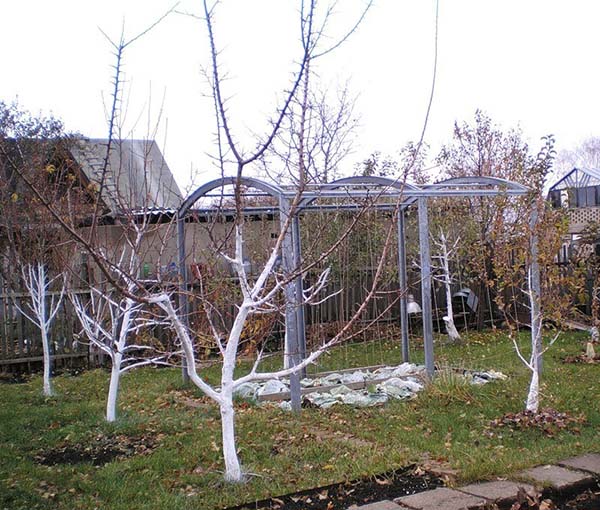
- carry out water-charging irrigation and dig up the ground in the near-trunk circle;
- cover for the winter (including protecting young trees from rodents, sunburn and damping of the root collar).
Next, we will analyze each of the activities for the autumn care of the apricot tree.
Autumn feeding of apricot after fruiting
Immediately after harvesting the apricots, i.e. even in the second half of summer, it is advisable to feed apricot trees phosphoric-potassium fertilizers (in no way nitrogen such as urea or ammonium nitrate).
If you did not do this in the summer, then, of course, you can and should fertilize in the fall, for example, in September.
Most often used for this superphosphate and potassium sulfate either just potassium monophosphate (it costs more, but also more effective), or they buy ready-made special "Autumn" (= phosphorus-potassium) fertilizers for the garden. Naturally, there are organic analogue - wood ash (potassium) and bone flour (phosphorus).
Important! Usually, all fruit trees are fertilized in autumn about the same, so for example you can read See this detailed article on autumn feeding apple trees.
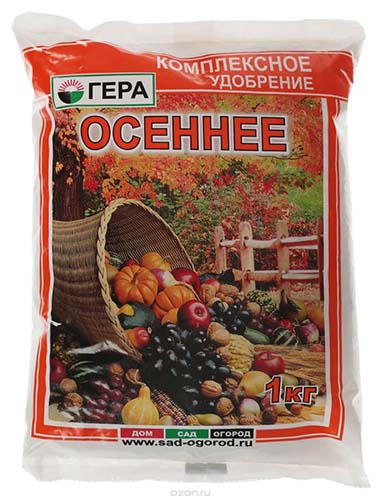
By the way! All stone fruits are taken from the soil a lot of calcium to build your bones, therefore it is highly desirable to periodically feed apricots with calcium fertilizers, for example, calcium nitrate, dolomite flour (it also deacidifies the soil). Moreover, you can make them at any time - both in autumn and spring.
Video: how to feed apricots in autumn
Top dressing by leaf for better ripening of shoots
If at the beginning of autumn you see that a young apricot planted this spring, the shoots are still quite green, i.e. unripe and not lignified (and such shoots simply cannot overwinter and will necessarily freeze out), then to speed up their ripening (in winter they should go brown) you must without fail foliar top dressing (spray with a solution on the sheet) with phosphorus-potassium fertilizer (optimally - potassium monophosphate).
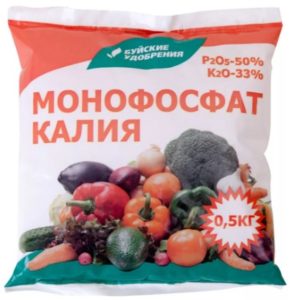
By the way! Also used for ripening apricot shoots summer chasing or trimming... So, the length of a young growth should not exceed 40-60 cm, everything else needs to be cut off.
Autumn pruning of apricot
As you know, all fruit trees, including apricots, are best cut in early spring. However, in some cases, autumn pruning is also allowed.
Advice! The site has detailed material about how to prune an apricot in spring.
The fact is that in the fall, trees stop all active defense (their defense mechanisms stop), while millions of fungal spores fly around. In addition, at the onset of frost, the cambium freezes over, and wound healing is difficult. In other words, autumn pruning weakens all trees, their winter hardiness decreases. Therefore, it is believed that only winter-hardy breeds can be cut in autumn, which tolerate frosts well and are not at all afraid of freezing (apricot certainly does not apply to them, since the culture is quite thermophilic).
There is also a common, but not indisputable rule that pome trees are cut in autumn, and stone fruit trees in spring.
But in general, in the fall, only sanitary pruning of apricots is most often carried out, i.e. get rid of dry, broken and diseased branches (especially affected moniliosis, which have a monilial burn).
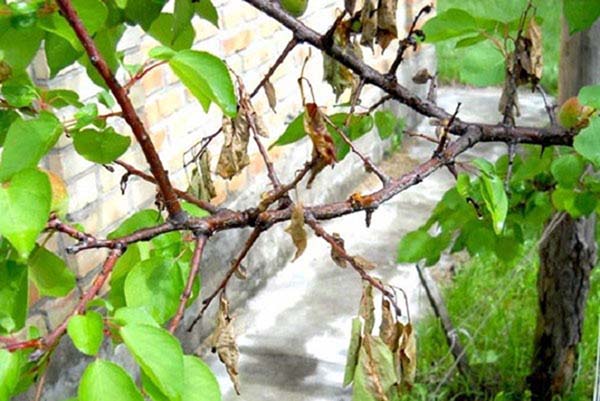
Autumn processing of apricots against diseases and pests: eradication spraying
So, by this processing of apricot tree you need eradicate all remaining pathogenic fungi and insect pests (including their eggs) so that they could not overwinter on / in the bark and near-trunk circle (in the soil).
As for the timing, the autumn eradicating spraying of apricots is carried out only after all the foliage has fallen from the tree, the plant completely goes into a state of dormancy, its buds will “close” and become inaccessible to the ingress of powerful and strong solutions (that is, they will not burn), with which we will spray the tree.
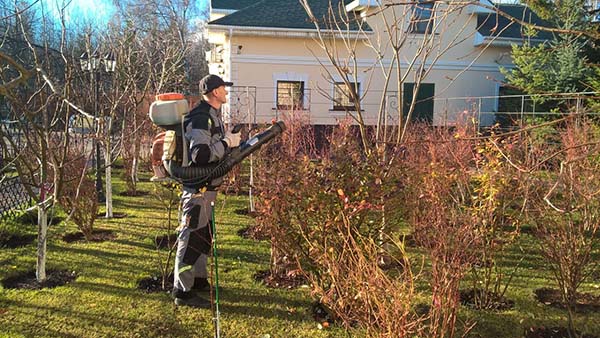
However, it is also not worth delaying too much: it is important be in time before the onset of stable frosts, otherwise the preparations (fungicides and insecticides) simply will not work and the procedure will become meaningless (as a rule, most agents are effective at a temperature of +5, so read the instructions carefully).
As a means for autumn tree processing, they are most often used inkstone in combination with urea or Bordeaux liquid.
You need to process everything 1 time.
Video: autumn eradicating spraying of fruit trees
By the way! If in the summer you noticed that the leaves of your apricot trees have dried up, are hanging as if "burned", then just know: this monilial burn (moniliosis)... Autumn processing also helps from the disease. bordeaux liquid or simply copper sulfate (but they are better off in spring).

Video: how to spray apricots and cherries from moniliosis in the fall
Note! If you processed apricot in the fall, this does not mean that to spray in early spring you don't need it anymore. How much more necessary! Autumn eradication spraying actually similar to early spring garden processing (the very first, it is also called eradicating).
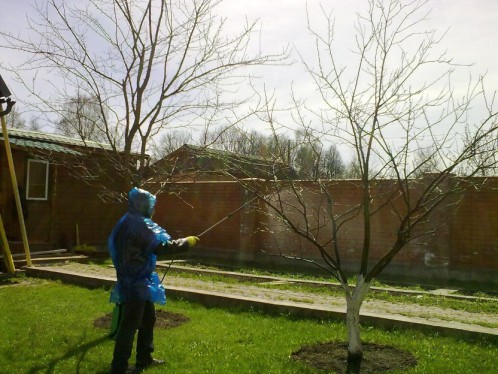
Whitewashing apricots in autumn
The purpose of the autumn whitewashing of any fruit trees (including apricots) is prevention of frostbites (sunburn), cracks on the bark, which are formed due to temperature changes (plus-minus, plus-minus) in the transitional winter-spring period (in February-March).
Note! Whitewashing in the spring (April-May) does not make any senseapart from the aesthetic. It's another matter if you come to the dacha in late February or early March and whitewash. But does anyone do that?
Accordingly, it is necessary to whitewash old trees, and especially young ones. Moreover, when whitewashing the trunks of young seedlings, weaker solutions should be used (if you use lime, then its concentration should be reduced by 2 times) so as not to burn the young bark. Or you can use special paints for whitewashing garden trees: buy the same water-based or water-based paint, or acrylic paint.
In any case, it is imperative to whitewash, since young seedlings have the thinnest bark, which can very easily be damaged in late winter or early spring from sunburn (it simply bursts due to temperature differences).
By the way! The site already has an article about when and how to whitewash fruit trees in autumn (all trees are whitened in the same way).
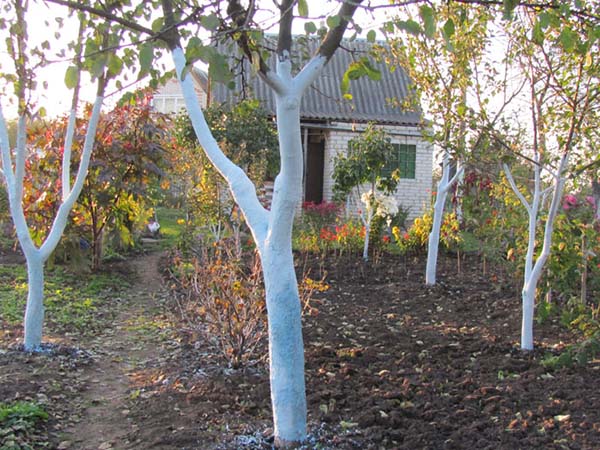
By the way! There is a not unfounded opinion that very young seedlings with smooth bark it is better not to whitewash, but to wrap the barrel with white covering material (spunbond ribbons)... So you not only prevent sunburn, but also protect the seedling from rodents (more on this in the next paragraph).
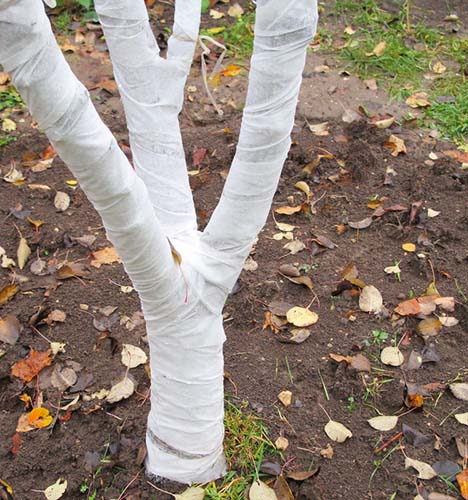
Autumn water-charging irrigation
It is also called "water-charging" irrigation or "winter" irrigation.
Autumn water-charging watering of apricots is another useful activity that allows you to better prepare the tree for winter by “filling” it with moisture.The fact is that moist soil freezes less and has greater thermal conductivity, in other words, the heat from the lower layers of the soil will warm up the roots of your apricot tree during the cold period.
By the way! Moisture-charging watering is recommended for all fruit trees and berry bushes.
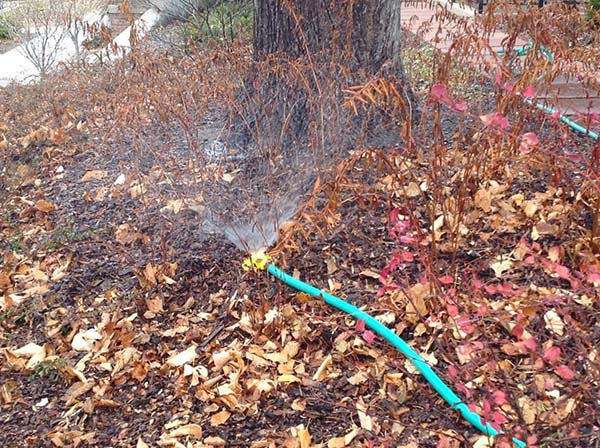
How long does it take?
- With the beginning or after the fall of leaves, on the eve of cold weather (at a positive temperature).
When is winter watering especially necessary?
- In case you have sandy loam soil and autumn does not indulge in frequent and heavy rains, and winter is not snowy.
It is worth understanding! Of course, if the fall is very rainy, then you can completely do without water charging irrigation.
How much water do you need?
- Approximately 40-100 liters of water per 1 square meter of the trunk circle (for young - 40-50 liters, for adults - 80-100 liters), i.e. you need to calculate the area according to the crown projection (its perimeter). The more mature and massive your tree is, the more water you need: from about 50 to 200 liters.
Advice! Naturally, you don't need to carry any buckets: take the hose and move it around the trunk circle (and first measure how many minutes it takes to get one 10-liter bucket. For example, if in 30 seconds, then 5-10 minutes will be enough).
Video: what is water-charging irrigation and how to carry it out correctly
Advice! And after watering (for example, the next day) it is very desirable also loosen the soil in the near-barrel circle, because loose earth freezes less.
Of course, if you have a good layer of sod under the trees or grass (lawn) just grows, then you do not need to touch it.
Shelter for apricots for the winter: protecting young trees from rodents, sunburn
The last stage of caring for apricot in autumn is its immediate preparation for wintering.
Of course, an adult apricot tree is quite a relatively frost-resistant crop that does not require any shelter for the winter. However, a young apricot seedling (e.g. planted this spring) still needs some protection, and first of all not from frost, but from rodents and hares, as well as from sunburn (which was described in detail in the paragraph on autumn whitewashing).
So, in order to protect young apricot from hares and rodents (mice) that like to gnaw the bark, you need wrap (more precisely, bandage) the lower part of the trunk from the ground itself to the skeletal branches special protective non-woven (= breathable) material, for example, the same spunbond or lutrasil, some kind of burlap (but by no means a film, otherwise your tree underneath it will shake out).
By the way! In this case, you even no need to whitewash the treesince white non-woven fabric and will perform a protective function to prevent sunburn (i.e., will act as a sun reflector).
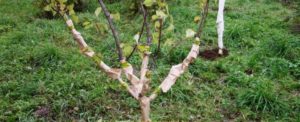
Or you can buy finished tape for wrapping trunks of fruit trees for the winter.
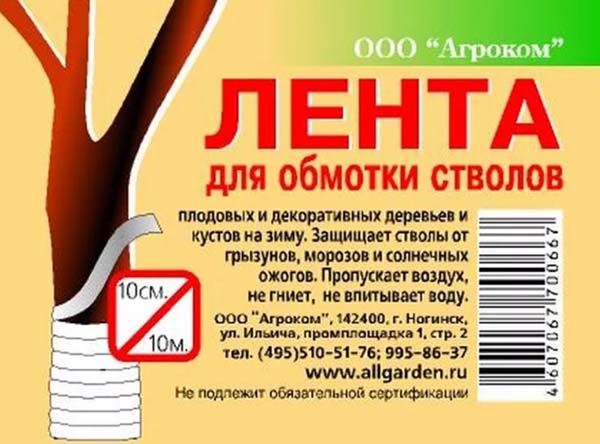
And some gardeners even put metal mesh frame.
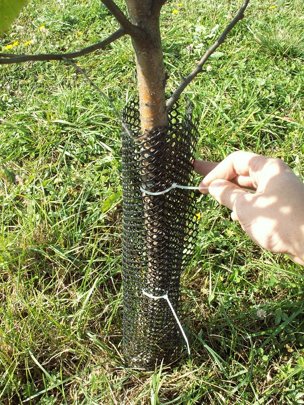
Similar wooden structures are erected.
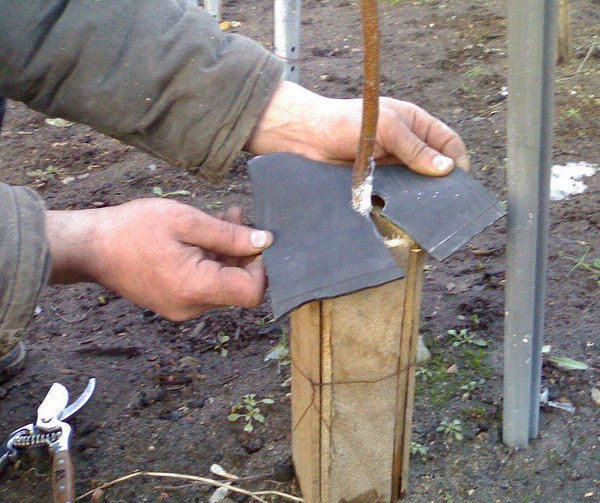
Advice! If rodents or hares have seriously damaged the bark of your apricot tree, so to speak, gnawed with a ring, then to save the tree, you will need it plant in spring with a bridge, which is described in detail in this article.
Another significant problem when growing apricots in a "raw" climate is damping of their root collar, therefore, in the fall, they must be freed from excess mulch and, if desired, additionally cover the lower part with mastic varnish to protect it from excess moisture.
Video: protecting apricots from damping out the root collar
Well, now you know that the harvest of the next year will fully depend on the quality autumn care of the apricot tree and its proper preparation for winter. Therefore, despite the large number of autumn worries, the efforts made will no doubt be generously rewarded!
Video: how to properly prepare fruit trees for winter

